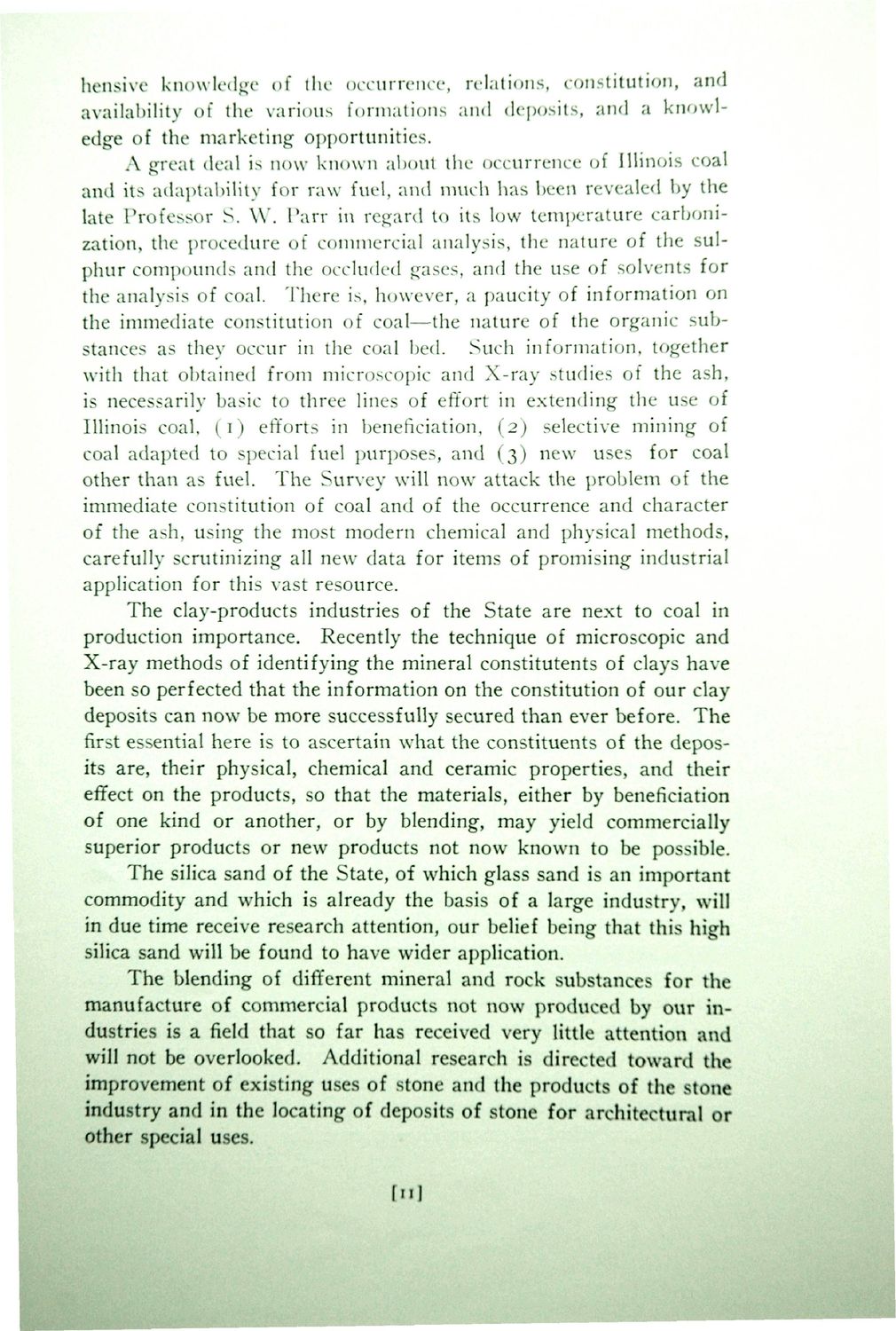| |
| |
Caption: Dedication - ISGS New Mineral Lab
This is a reduced-resolution page image for fast online browsing.

EXTRACTED TEXT FROM PAGE:
hensive knowledge of the occurrence, relations, constitution, and availability of the various formations and deposits, and a knowledge of the marketing opportunities. A great deal is now known about the occurrence of Illinois coal and its adaptability for raw fuel, and much has been revealed by the late Professor S. W. Parr in regard to its low temperature carbonization, the procedure of commercial analysis, the nature of the sulphur compounds and the occluded gases, and the use of solvents for the analysis of coal. There is, however, a paucity of information on the immediate constitution of coal—the nature of the organic substances as they occur in the coal bed. Such information, together with that obtained from microscopic and X-ray studies of the ash, is necessarily basic to three lines of effort in extending the use of Illinois coal, ( i ) efforts in beneficiation, (2) selective mining of coal adapted to special fuel purposes, and (3) new uses for coal other than as fuel. The Survey will now attack the problem of the immediate constitution of coal and of the occurrence and character of the ash, using the most modern chemical and physical methods, carefully scrutinizing all new data for items of promising industrial application for this vast resource. The clay-products industries of the State are next to coal in production importance. Recently the technique of microscopic and X-ray methods of identifying the mineral constituents of clays have been so perfected that the information on the constitution of our clay deposits can now be more successfully secured than ever before. The first essential here is to ascertain what the constituents of the deposits are, their physical, chemical and ceramic properties, and their effect on the products, so that the materials, either by beneficiation of one kind or another, or by blending, may yield commercially superior products or new products not now known to be possible. The silica sand of the State, of which glass sand is an important commodity and which is already the basis of a large industry, will in due time receive research attention, our belief being that this high silica sand will be found to have wider application. The blending of different mineral and rock substances for the manufacture of commercial products not now produced by our industries is a field that so far has received very little attention and will not be overlooked. Additional research is directed toward the improvement of existing uses of stone and the products of the stone industry and in the locating of deposits of stone for architectural or other special uses. I"|
| |